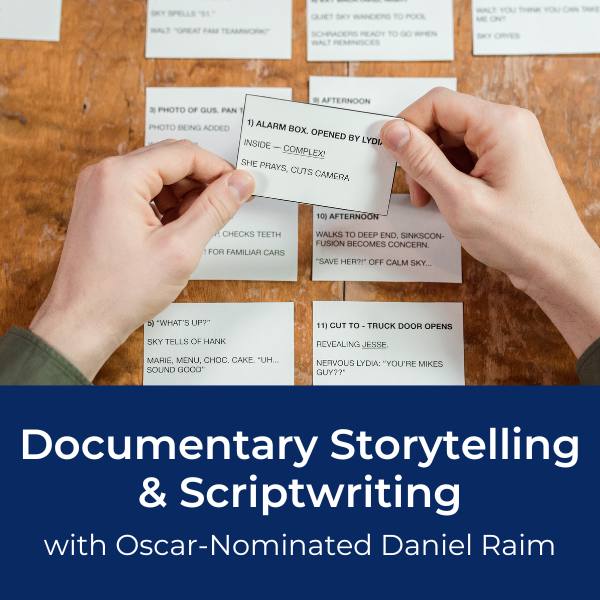Documentary Fundraising
“Shaking the Money Tree”
How to "crack the code" for funding your documentary
Documentary fundraising is a fact of life, some might say necessary evil, for just about every documentary filmmaker.
“The single most challenging aspect has nothing to do with filmmaking per se: it’s the fundraising,” says New York documentary filmmaker Gail Freedman about the challenges of documentary filmmaking. “It’s a different skill set entirely. Some people are very good at it and some even enjoy it. I envy them. I have a drawer full of unmade films – some of which I think are really great ideas – and no way (yet) to get them made.”
How can filmmakers get the funding they need, to make the films they want to make?
Here are the main categories of funding sources for documentaries:
- Individuals
- Businesses/Corporations
- Non-Profits
- Government Agencies (Local, State, Federal)
- Private Foundations
Each category/group has its own set of rules, culture, language and nuances for obtaining funds.
How are filmmakers supposed to know those rules and the correct way to approach each group to actually obtain funding? I think a lot of filmmakers believe it to be some kind of a mysterious and magical process that only the luckiest or smartest or most well connected can crack.
The good news is that there are some very specific things you can do to increase your chances of getting funding for your film.
I recently come across a book designed to “crack this code” for documentary filmmakers.
Book Review
Shaking The Money Tree: The Art of Getting Grants and Donations for Film and Video
By Morrie Warshawski
There is no doubt Morrie Warshawski knows his stuff about documentary fundraising and he obviously did his research for this book. It is packed full of “real world” examples, advice and lessons on how to find funding for your film.
He’s not a filmmaker himself (he’s an arts writer, consultant and strategic planner), yet he’s obviously been through the fundraising process. He served as Executive Director of three arts organizations: Bay Area Video Coalition, Northwest Media Project and Portland Dance Theater. And his bio lists an impressive roster of clients including the National Endowment for the Arts, National Assembly of State Arts Agencies and the Maryland State Arts Council.
Documentary Fundraising Tips
Shaking the Money Tree is targeted specifically toward documentary filmmakers and is a step-by-step guide on how to find and get funding. It covers in great detail everything from researching and finding potential funding sources to writing the proposal to the actual ask.
Here are a few tips from the book:
- Talk to distributors BEFORE you make your documentary to see if your film idea has an audience. If a distributor is excited about your film, get them to write you a letter, which is a great tool for fundraising.
- Watch documentaries in your subject matter and look in the credits for who funded those docs. You’ll find some great leads to funding sources.
- Ask a supporting organization to help you fundraise by sending out an appeal to their e-mail or mailing list.
Fundraising Mind-set
Morrie doesn’t sugarcoat the fundraising process. In fact, after reading Shaking the Money Tree, you will become more enlightened to the complexities and difficulties involved in documentary fundraising while also feeling empowered with specific fundraising tools and strategies you can begin using right away.
How To Approach Foundations
Every foundation or government agency has its own application guidelines and stipulations. Morrie dives into the realities and processes of grant funding, explaining when to break the rules, when NOT to break the rules and how to get past the walls and gatekeepers.
He provides an exact process for how to properly communicate with foundations to make sure your proposal doesn’t get lost or forgotten. A couple of real world grant proposals are included at the end of the book.
Your Personality
Above all, fundraising is not a “one size fits all”. A fundraising strategy must be built around the filmmaker’s personality and the nature of the documentary project. No two fundraising strategies will be exactly the same.
Internet Fundraising
The only real downside to this book (if there is one) is that it doesn’t go into a lot of detail about internet fundraising which has become a powerful medium for filmmakers to raise money and awareness for their films. Visiting sites such as IndieGogo.com or Kickstarter.com you'll find some excellent tips and tutorials on best practices for online "crowdfunding".
In Summary
As Morrie says (and I agree), the best fundraising is a hybrid approach raising money from a variety of sources including the internet, individuals, companies, foundations, government agencies and other non-profits. And this book more than covers the vast majority of fundraising issues you’ll encounter, at least when it comes to getting grants and reaching out to individuals, businesses and government agencies.
In summary, if you’re looking for a comprehensive guide to documentary funding, Morrie Warshawski’s Shaking the Money Tree is an excellent resource. I can see why it's been referred to as the "bible" for independent noncommercial film and video fundraising.
Related Articles
- Where to find money for your documentary
- How To Throw a Fundraising Houseparty
- Documentary Budgeting, Budget Templates, Going Rates Table
- How To Write a Documentary Treatment and Documentary Proposal
- Fundraising Book Review: "Ask Without Fear"
Return to Documentary Film Grants from
Documentary Fundraising Shaking The Money Tree
Other Fundraising Resources You May Enjoy
|
|
|
|
Ready To Make Your Dream Documentary?
Sign up for our exclusive 7-day crash course and learn step-by-step how to make a documentary from idea to completed movie!













